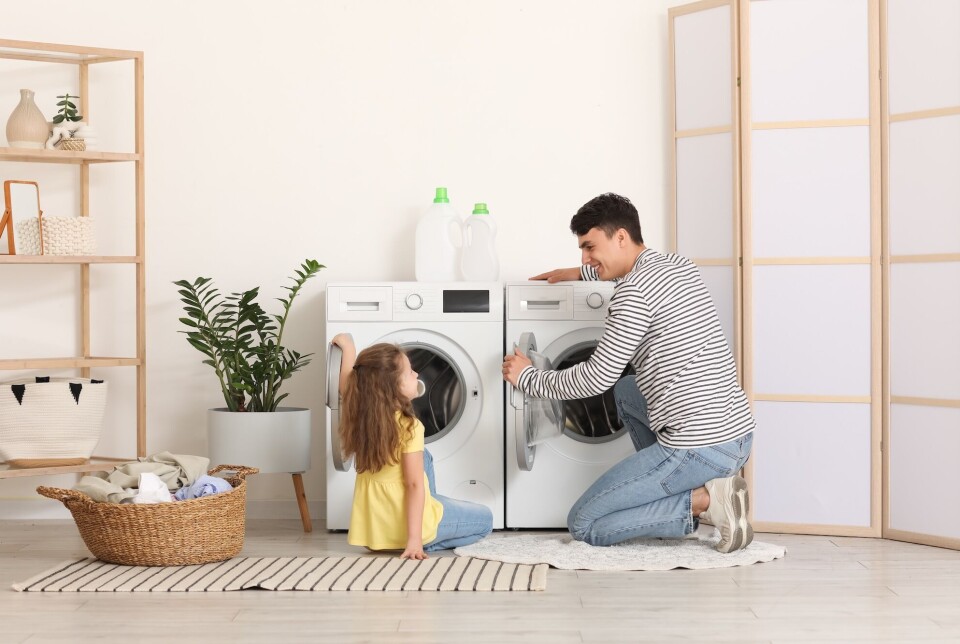THIS CONTENT IS BROUGHT TO YOU BY NTNU Norwegian University of Science and Technology - read more
Is your washing machine built to have a shorter lifespan than it used to?
It seems that household appliances do not last as long as before. But that does not necessarily mean the machines are worse now.

Big appliances like washing machines, ovens, and refrigerators are a major investment for many households. Consumers want them to last a long time.
But people have the impression that these big-ticket items don't last as long as they once did.
Researcher Kamila Krych at The Norwegian University of Science and Technology (NTNU) has looked into the matter. She found that this isn't quite true.
“Despite what people think, there's no evidence that product lifetimes are decreasing,” she says.
However, there are two exceptions: washing machines and ovens.
The big exceptions
Krych looked at a range of data on large appliances in Norwegian households, starting from the time they were first adopted in the country.

For refrigerators, washing machines, and ovens, this began in 1950.
Other appliances did not find their way into Norwegian households until several decades later. That was true for dishwashers, freezers, and tumble dryers.
For almost all of these appliances, their lifespan is roughly the same now as before. Except for washing machines and ovens.
The lifetime of washing machines has decreased by 45 per cent. This means that their lifetime has gone from 19.2 to 10. 6 years.
Ovens used to last 23.6 years, but now last an average of 14.3 years. That is a 39 per cent decrease in lifetime.
“If planned obsolescence or another single factor was to blame, we would expect the same decreasing trend across all appliances. Instead, we only found it for washing machines and ovens,” she says.
Why was this true just for these two appliances?
A cleaner lifestyles?
To find the answer, Krych dug deeper into published information on consumer preferences and details about the appliances themselves.
For washing machines, the answer is pretty simple, she believes. The lifetime is not necessarily how many years the product lasts, but may be more closely related to how many cycles it runs.

“For washing machines, what matters is how often you run it. And there's been a documented large change in laundry habits. People do laundry much more often now than in the past,” she says.
Krych found the information she needed in a study from 2003. It showed that in 1960, an average Norwegian family of four did laundry twice a week. By 2000, this number had increased to eight times a week.
So the average family was using the washing machine four times more often.
“This obviously can have an influence on lifetimes of washing machines,” she says.
For ovens, however, the story is a little more complicated.
Changes in electronics and kitchen trends
Krych’s research did not directly address how people used their kitchens. But she was able to look at published research on societal trends in Norway over the decades.
“Ovens used to be very durable, and historically lifetimes were high, because oven design is very simple,” she says.
But Krych found other research that showed roughly 40 per cent of all ovens in Norway are thrown away while they are still functioning. That number is higher than for other large household appliances.
Her own findings also showed that the lifetimes of other appliances in Norwegian kitchens, such as refrigerators and dishwashers, was also converging – meaning that all of these appliances had about the same lifetimes.
“This is circumstantial evidence, but this points to the importance of kitchen renovation. And right now, we often have all of these appliances integrated in kitchen cupboards. And because of how expensive things are in Norway, it’s often much easier to discard everything at once when you renovate your kitchen than to keep your oven for longer, even though it still works,” she says.
Researchers are also seeing a change in the way the kitchen is used in Norwegian households.

“There is lots of social science research that says we use kitchens differently now than we used to in the past. People often have kitchens integrated with their living rooms. And this means that the look of the kitchen matters much more,” she says.
Changing consumer behaviour
Current policies in the EU designed to help cut the overall environmental impact of consumer consumption have focused on product durability and incentives for repairing products.
Krych says that’s a good goal, but thinks that policymakers could benefit from including social factors, such as changes in lifestyles, into their planning.
“Product lifetimes are not only about how long the product can last, but also what people do with them,” she says.
Reference:
Krych, K. & Pettersen, J.B. Long-term lifetime trends of large appliances since the introduction in Norwegian households, Journal of Industrial Ecology, vol. 29, 2025. DOI: 10.1111/jiec.13608
———
Read the Norwegian version of this article on forskning.no
More content from NTNU:
-
Why are pregnant women in Norway so worried?
-
Politics on Facebook: Populist parties choose divisive issues on purpose
-
Social media is connected to cyberbullying – but not how we thought
-
Forskere ved NTNU får nesten 24 millioner av EU for å lage nye strømomformere
-
This helps the youngest children enjoy school more
-
Can we tap the ocean’s power to capture carbon?





































